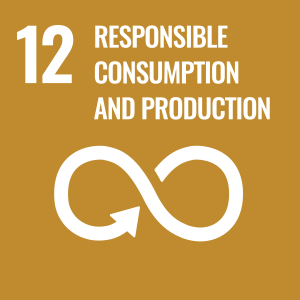
Dr Anastasios Karantounias
About
Biography
Anastasios Karantounias is an Associate Professor in the School of Economics at the University of Surrey.
He is an Academic Visitor at the Bank of England, an Associate of the Centre for Macroeconomics (LSE branch), a Fellow of the Institute for Sustainability at the University of Surrey, and a member of the Macro Finance Society.
His major field of study is macroeconomics with a particular emphasis on optimal fiscal and monetary policy, macro-finance, ambiguity, imperfect information and optimal carbon taxation.
Prior to joining the School, Dr. Karantounias worked as a research economist in the Research Department of the Federal Reserve Bank of Atlanta. Before that, he was a research and teaching assistant at New York University. He also worked as a research intern at the Research and Statistics Division of the Federal Reserve's Board of Governors and the Monetary Policy Strategy Division of the European Central Bank.
Dr Karantounias has been a Visiting Scholar at Northwestern University and a Visiting Professor multiple times at LUISS Guido Carli and the Einaudi Institute for Economics and Finance. He has also taught previously at Emory University.
Dr. Karantounias has published in leading international journals including the Review of Economic Studies, American Economic Journal: Macroeconomics, Journal of Economic Theory, Theoretical Economics and has continuously presented his research at many international and domestic universities and conferences, including the meetings of the Society for Economic Dynamics, the American Economic Association, the Econometric Society, and the European Economic Association. He is also an expert reviewer at several top academic journals in economics.
Dr. Karantounias has organised the Surrey Workshop on Macroeconomics (May 2022) an academic workshop that brings together leading researchers across the world that conduct frontier work on the broader field of macroeconomics, the 4th edition of the Macroeconomics Network in the Southwest Workshop (November 2023), a leading academic workshop in macroeconomics for the universities of the Southwest (Bath, Bristol, Cardiff, Exeter, Southampton, and Surrey), and the Bristol-Surrey Workshop in Macroeconomics (March 2024). He has also organised multiple contributed sessions at the Annual Meetings of the American Economic Association (2013, 2017, 2019, 2025).
Dr. Karantounias received his doctorate in economics in 2008 from New York University and a master's degree in economics in 2004 from the same institution. He received his bachelor's degree in economics in 2001 from the Athens University of Economics and Business in Athens, Greece.
Areas of specialism
Teaching
Please see SurreyLearn.
Sustainable development goals
My research interests are related to the following:





Publications
This paper analyzes optimal policy in setups where both the policymaker and the private sector have doubts about the probability model of uncertainty and form endogenous worst-case beliefs. There are two forces that shape optimal policy results: a) the manipulation of the endogenous beliefs of the private sector so that the forward-looking constraints that the policymaker is facing are relaxed, b) the discrepancy (if any) in pessimistic beliefs between a paternalistic policymaker and the private sector, which captures ultimately differences in welfare evaluation. I illustrate the methodology in an optimal fiscal policy problem and show that manipulation of beliefs materializes as an effort to make government debt cheaper through the endogenous beliefs of the household. This force may lead to either mitigation or amplification of the household's pessimism, depending on the problem's parameters. The policymaker's relative pessimism determines whether paternalism reinforces or opposes the price manipulation incentives.
In times when elevated government debt raises concerns about dimmer global growth prospects, we ask: How can the government provide incentives for innovation in a fiscally sustainable way? We address this question by examining the Ramsey problem of finding optimal tax and subsidy schemes in a model in which growth is endogenously sustained by risky innovation. We characterize the shadow value of growth and entry in the innovation sector. We find that a profit tax is required to replicate the first-best in order to balance the positive spillovers of innovative activity. At the second-best, the profit tax is designed to optimally respond to growth shocks above and beyond what is prescribed by the standard tax-smoothing incentives in economies with exogenous growth. The interplay of risk and innovation opens a new margin for optimal taxation.
This paper extends the dynamic theory of optimal fiscal policy with a representativeagent in several environments by using a generalized version of recursive preferences. Iallow markets to be complete or incomplete and study optimal policy under commitmentor discretion. The resulting theories are interpreted through the excess burden of taxation,a multiplier, whose evolution gives rise to different notions of “tax-smoothing.” Variantsof a law of motion in terms of the inverse excess burden emerge when we allow for richerasset pricing implications through recursive preferences. I highlight a common unifyingprinciple of taxation and debt issuance in all environments that revolves around interestrate manipulation: issue new debt and tax more in the future if this can lead to lowerinterest rates today.
This article illustrates the main challenges and forces that emerge in optimal policy design when there are doubts about the probability model of uncertainty. Model doubts can stem from either the side of the public or the side of the policymaker, and they can give rise to cautious probabilistic assessments. A basic idea that surfaces in setups with model uncertainty is the management of the public's pessimistic expectations by the policymaker. The article also presents several implications of this idea. Key findings: 1. Both the public and governments struggle with model uncertainty, especially in unprecedented times. 2. Lack of confidence in the probability model of the economy gives rise to cautious probabilistic assessments by all economic actors.
We study the implications of overconfidence for price setting in a monopolistic competition setup with incomplete information. Our price-setters overestimate their abilities to infer aggregate shocks from private signals. The fraction of uninformed firms is endogenous; firms can obtain information by paying a fixed cost. We find two results: i) overconfident firms are less inclined to acquire information relative to the rational benchmark; ii) prices might exhibit excess volatility driven by non-fundamental noise. We explore the empirical predictions of our model for idiosyncratic price volatility.
This paper analyzes optimal fiscal policy with ambiguity aversion and endogenous government spending. We show that without ambiguity, optimal surplus-to-output ratios are acyclical and that there is no rationale for either reduction or further accumulation of public debt. In contrast, ambiguity about the cycle can generate optimally policies that resemble "austerity" measures. Optimal policy prescribes higher taxes in adverse times and front-loaded fiscal consolidations that lead to a balanced primary budget in the long run. This is the case when interest rates are sufficiently responsive to cyclical shocks, that is, when the intertemporal elasticity of substitution is sufficiently low.
The authors (CNS henceforth) consider an endogenous growth economy with exogenous government expenditures, a linear tax on labor income and a household that is afraid that the probability model of productivity and government expenditure shocks is misspecified. In particular, CNS use a stochastic version of an expanding input variety model à la Romer (1990) and explore the implications of two fiscal regimes: a balanced-budget regime and a fiscal regime that allows the accumulation of debt and involves primary deficits or surpluses when labor is below or above its steady-state value respectively. CNS find that with full confidence in the model, the fiscal regime that allows for counter-cyclical deficits dominates in terms of welfare the balanced-budget regime. With doubts about the probability model though, the opposite happens. The explanation of this intriguing result is based on the formation of agents' expectations. Agents with concerns about misspecification use continuation utility in order to adjust pessimistically their expectations about the future. Counter-cyclical deficit policies, despite their welfare-enhancing potential in the short-run, posit long-run uncertainty in the sense of creating more persistent and volatile dynamics in continuation utility, towards which agents are averse. Agents adjust downwards their assessment of the present value of profits of a new input variety, innovate less and as a result, a lower growth rate in the economy is obtained. In this comment, I will highlight some relevant ingredients of the CNS economy and make some points towards optimal fiscal policy.
I study the implications of recursive utility, a popular preference specification in macro-finance, for the design of optimal fiscal policy. Standard Ramsey tax-smoothing prescriptions are substantially altered. The planner over-insures by taxing less in bad times and more in good times, mitigating the effects of shocks. At the intertemporal margin, there is a novel incentive for introducing distortions that can lead to an ex-ante capital subsidy. Overall, optimal policy calls for a much stronger use of debt returns as a fiscal absorber, leading to the conclusion that actual fiscal policy is even worse than we thought.
This paper studies the design of optimal fiscal policy when a government that fully trusts the probability model of government expenditures faces a fearful public that forms pessimistic expectations. We identify two forces that shape our results. On the one hand, the government has an incentive to concentrate tax distortions on events that it considers unlikely relative to the pessimistic public. On the other hand, the endogeneity of the public's expectations gives rise to a novel motive for expectation management that aims toward the manipulation of equilibrium prices of government debt in a favorable way. These motives typically act in opposite directions and induce persistence to the optimal allocation and the tax rate.
